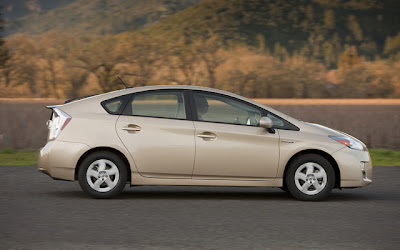
When our long-term Mi�tsubishi Lancer Evolution MR arrived in July 2008, we were hit by a wave of sticker shock. At an as-delivered price of $41,515, the Evo exceeded the starting price of a BMW 335i.
The Mitsubishi comes with a 291-hp turbocharged engine, a six-speed dual-clutch transmission, and one of the most sophisticated all-wheel-drive systems on the market. But a great swath of hard interior plastic and a shortage of amenities such as heated seats made the Evo feel spartan for its price. Not even the touch-screen navigation system, part of the $2550 Technology package (the only option on our car), did much to shake that perception.
For 2010, Mitsubishi has added the MR Touring model that loses the juvenile rear wing and adds some luxury trappings, but it costs $2000 more than the standard MR. The base price on the MR has crept up to $39,735 from the 2008 figure of $38,965.
The Evolution lineup starts at a more reasonable $34,335 in five-speed-manual GSR trim (or $33,710 back in 2008). But we wanted to try the new TC-SST dual-clutch gearbox that is offered only on the MR, which also includes upgrades such as Bilstein shocks, lightweight wheels, HID headlamps, and keyless ignition.
In terms of performance, our Evo did all the right things. Even though it could stand to be more aggressive off the line�Mitsu�bishi says the Evo MR has �launch control,� but labeling the lazy clutch engagement as such is a stretch�the car ripped from 0 to 60 mph in 5.3 seconds when new; at the end of our test, acceleration improved by 0.4 second to 60 and in the quarter-mile. Skidpad grip also increased, from a strong 0.93 g to an astonishing 0.96, and braking from 70 to 0 mph was consistently impressive, at 158 feet when new and 162 feet in our final test. These numbers earn the Evo true sports-car credentials, and its driver-focused environment backs up that impression with big magnesium shift paddles on the steering column and deep, supportive Recaro seats for the front occupants.
The following theme emerged from the logbook: Everything in the Evo comes at a price. Especially at the gas pump. With its SUV-like EPA rating of 17 mpg in the city and 22 on the highway�and a 14.5-gallon fuel tank�we didn�t anticipate bladder-busting range, but the Evo continually surprised us with its need for frequent fill-ups. It only managed more than 300 miles on a tank on three occasions, and highway cruising at 75 mph or above would drop a given tank�s mileage down near our average of 19 mpg.
The second wave of sticker shock came from running costs, starting with the grippy Yokohama Advan A13C tires, which wore out in 16,000 miles and run $351, each. We made the slightly less expensive ($266 per corner) but still great Yokohama Advan Neova AD08 our replacement choice, but we included the price of two sets of OE tires and mounting them in the official tally. Also, it cost $463 to have new rear brake pads installed at 32,700 miles. Regular maintenance further added to the pain of these normal-wear costs, making for a total of $5059. Part of that was a $623 service at 30,000 miles featuring six quarts of transmission fluid at $35 per. The 15,000-mile service ran $228, and lesser maintenance intervals came every 5000 miles and cost between $69 and $150. Compare that $5059 sum�$3128 in tires alone!�with that of our previous long-term Evo VIII, a 2003 model, which rang up $3706 in bills over the 40,000-mile test [April 2005]. Including gas and tires, we paid 28 cents a mile to keep this Evo X on the road.
Pricey operating costs aside, the Evo was essentially trouble-free. We did have to make an unscheduled stop to fix a loose underbody tray. And then there was the rainy night in November 2008, when a Camry rear-ended the Evolution in stop-and-go traffic, sending it to the shop for $5402 worth of insurance-covered repairs.
The six-speed dual-clutch transmission was universally praised for its speedy and crisp gearchanges. We didn�t like the car�s bad habit of taking a second or two to shut down the engine after we killed the ignition; Mi�tsubishi explained that transmission fluid is cycled during this time to preserve the heat-sensitive clutches.
Almost every driver praised the Evo�s sharp reflexes and supreme handling. But as the months wore on, that initial fascination with the car�s terrific performance and technology wore off. Michigan roads, mostly straight and in various states of disrepair, offer little opportunity to take advantage of the Evo�s quick responses. Staffers complained that the ride was too stiff for workaday commuting; most of them had not driven the Evo on a racetrack and were thus short on sympathetic justification. The seats, which some drivers (including this writer) raved about, drew contempt for being too deep for easy exits, too narrow for some hips, and too low (there�s no height adjustment). By the end of our test, the front edge of the driver�s seat showed visible wear.
The trunk, which is compromised by the intrusion of the battery and the washer-fluid reservoir, couldn�t hold two hockey bags when our K.C. Colwell embarked on a weekend rife with busted knees and broken teeth. Out back, the rear wing partly makes up for its view-bisecting location by acting as a push bar for opening the trunklid.
Another driver wrote that he was fonder of the 2003 Evolution because it felt livelier. The Lancer platform on which this latest Evo is based is larger and, in part to meet newer crash standards, results in a roughly 300-pound-heavier car. This newer model offers better overall performance, though the �03 car was quicker in a straight line. This Evo also has a highly satisfying navigation system and a better interior. (Did we just imply that the old car was a medieval torture chamber? Why, yes, we did.) But these improvements are not enough, we think, to justify the new big price�our long-term �03 Evo cost just $30,062. Some staffers think this version feels like a fast Lancer whereas the old Evo seemed to transcend its econobox roots and felt more deeply connected to Mitsu�s rallying legacy.
Even at this lofty as-tested price, there are few sedans that can match the performance of the Lancer Evolution. As is often the case, however, numbers aren�t everything. Without a regular opportunity to take advantage of all of the Evo�s capability, the compromises that come with its perform�ance left us wishing for a lower sticker price, more refinement, or both.
Specifications
VEHICLE TYPE: front-engine, 4-wheel-drive, 5-passenger, 4-door sedan
PRICE AS TESTED: $41,515 (base price: $38,965)
ENGINE TYPE: turbocharged and intercooled DOHC 16-valve inline-4, aluminum block and head, port fuel injection
Displacement: 122 cu in, 1998 cc
Power (SAE net): 291 bhp @ 6500 rpm
Torque (SAE net): 300 lb-ft @ 4000 rpm
TRANSMISSION: 6-speed dual-clutch automated manual
DIMENSIONS:
Wheelbase: 104.3 in Length: 177.0 in
Width: 71.3 in Height: 58.3 in
Curb weight: 3659 lb
C/D TEST RESULTS:
Zero to 60 mph: 4.9 sec
Zero to 100 mph: 13.1 sec
Zero to 130 mph: 29.2 sec
Street start, 5�60 mph: 5.8 sec
Standing �-mile: 13.5 sec @ 101 mph
Top speed (drag limited): 150 mph
Braking, 70�0 mph: 162 ft
Roadholding, 300-ft-dia skidpad: 0.96 g
FUEL ECONOMY:
EPA city/highway driving: 17/22 mpg
C/D observed: 19 mpg
Unscheduled Oil Additions: 0 qt
WARRANTY:3 years/36,000 miles bumper to bumper;
5 years/60,000 miles powertrain;
7 years/100,000 miles corrosion protection;
5 years/unlimited miles roadside assistance
(BY MICHAEL AUSTIN, PHOTOGRAPHY BY MARC URBAN)




 By the time we head to the Geneva auto show in a few days, there won�t be many surprises left to report�which is fine by us, as we�ll be busy arguing with French-speaking cabbies about accepting euros instead of Swiss francs.
By the time we head to the Geneva auto show in a few days, there won�t be many surprises left to report�which is fine by us, as we�ll be busy arguing with French-speaking cabbies about accepting euros instead of Swiss francs. When our long-term Mi�tsubishi Lancer Evolution MR arrived in July 2008, we were hit by a wave of sticker shock. At an as-delivered price of $41,515, the Evo exceeded the starting price of a BMW 335i.
When our long-term Mi�tsubishi Lancer Evolution MR arrived in July 2008, we were hit by a wave of sticker shock. At an as-delivered price of $41,515, the Evo exceeded the starting price of a BMW 335i.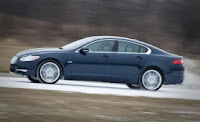 Just a single model year after the new Jaguar XF hit the streets, considerable powertrain improvements have found their way under its shapely hood. The previous 4.2-liter V-8 has disappeared from all but the base XF Luxury model, while the main mill has grown to 5.0 liters, gaining both horsepower and torque in its supercharged and naturally aspirated applications. Beyond uprating the engines, Jag also added the snarly XFR to the mix, creating a sort of intra-model rivalry and relegating the once top-cat XF Supercharged to middle-child status. How does it stack up now?
Just a single model year after the new Jaguar XF hit the streets, considerable powertrain improvements have found their way under its shapely hood. The previous 4.2-liter V-8 has disappeared from all but the base XF Luxury model, while the main mill has grown to 5.0 liters, gaining both horsepower and torque in its supercharged and naturally aspirated applications. Beyond uprating the engines, Jag also added the snarly XFR to the mix, creating a sort of intra-model rivalry and relegating the once top-cat XF Supercharged to middle-child status. How does it stack up now? 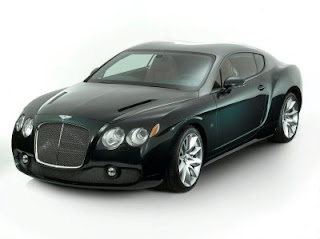
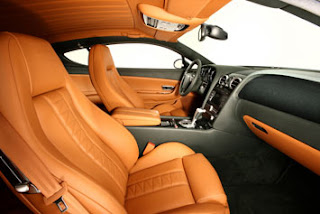
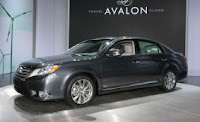 In between deflecting questions about runaway Camrys and Priuses that don�t stop, Toyota found time at the Chicago auto show to unveil the 2011 Avalon, which goes on sale this spring.
In between deflecting questions about runaway Camrys and Priuses that don�t stop, Toyota found time at the Chicago auto show to unveil the 2011 Avalon, which goes on sale this spring.  Porsche purists may have hated the Cayenne from the moment of its inception, but the success of the truck has allowed the continued production of cars that enthusiasts yearn for. In fact, in one of the supreme ironies of the auto industry recently, the profitability of the VW Touareg�based SUV was a reason that Porsche was able to attempt a hostile takeover of Volkswagen last year.
Porsche purists may have hated the Cayenne from the moment of its inception, but the success of the truck has allowed the continued production of cars that enthusiasts yearn for. In fact, in one of the supreme ironies of the auto industry recently, the profitability of the VW Touareg�based SUV was a reason that Porsche was able to attempt a hostile takeover of Volkswagen last year. 

 When it was introduced for the 2007 model year, the Edge was like a contemporary Mariah Carey�great to look at, but struggling with a weight problem and the resultant effects on performance. At the Chicago auto show, Ford shows off a freshening that enhances the Edge�s appearance, overhauls the interior, and, although not directly addressing the issue of mass, will increase performance.
When it was introduced for the 2007 model year, the Edge was like a contemporary Mariah Carey�great to look at, but struggling with a weight problem and the resultant effects on performance. At the Chicago auto show, Ford shows off a freshening that enhances the Edge�s appearance, overhauls the interior, and, although not directly addressing the issue of mass, will increase performance.  Porsche�s plans for hybrid road vehicles are nothing new�the company plans to introduce a hybrid Cayenne SUV in the truck�s next generation, as well as a hybrid version of its Panamera sedan�but at the Geneva auto show, the German sports-car king will introduce a hybrid race car based on its 911 GT3 R. It�s no mere concept, either. Following its debut, the car will head to the N�rburgring, where it will compete in the 24-hour race on May 15 and 16.
Porsche�s plans for hybrid road vehicles are nothing new�the company plans to introduce a hybrid Cayenne SUV in the truck�s next generation, as well as a hybrid version of its Panamera sedan�but at the Geneva auto show, the German sports-car king will introduce a hybrid race car based on its 911 GT3 R. It�s no mere concept, either. Following its debut, the car will head to the N�rburgring, where it will compete in the 24-hour race on May 15 and 16. 


